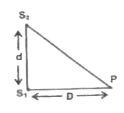Text Solution
Verified by Experts
The correct Answer is:
|
Topper's Solved these Questions
OPTICS
FIITJEE|Exercise ASSIGNMENT PROBLEMS (OBJECTIVE)(level 1)|50 VideosView PlaylistOPTICS
FIITJEE|Exercise ASSERTION REASONING TYPE|3 VideosView PlaylistOPTICS
FIITJEE|Exercise assignment problem(subjective)(lvl 1)|15 VideosView PlaylistMODERN PHYSICS
FIITJEE|Exercise Numerical based questions|5 VideosView PlaylistPHYSICS PART-III
FIITJEE|Exercise NUMERICAL BASED QUESTIONS DECIMAL TYPE|11 VideosView Playlist
Similar Questions
Explore conceptually related problems
Knowledge Check
A
B
C
D
Submit
Similar Questions
Explore conceptually related problems
FIITJEE-OPTICS-assignment problem(subjective)(Level - II & III)
- Find the focal length of the lens shown in the figure. The radii of cu...
03:22
|
Play - Rays of light strike a horizontal plane mirror at an angle of 45^(@).:...
02:19
|
Play - A thin converging lens forms the real image of certain real object mag...
04:56
|
Play - The diagonal AC of a right angled prism ABC is silvered. A ray of ligh...
Text Solution
|
Play - A parallel beam of light travelling in water (refractive index =4//3)...
03:49
|
Play - A thin equiconvex lens of glass of refractive side of 3/2 and of focal...
Text Solution
|
Play - A cylindrical glass rod has its two coaxial ends of spherical form bul...
Text Solution
|
Play - At a certain point on a screen the path difference for the two interfe...
02:19
|
Play - Two sources S1 and S2 emitting light of wave lengths 600 nm are placed...
02:45
|
Playing Now - A vessel ABCD of 10 cm width has two small slits s1 and S2 sealed, wit...
11:00
|
Play - A hollow sphere of glass of inner and outer radii R and 2R respectivel...
Text Solution
|
Play - A transparent solid sphere of radius 2 cm and density rho floats in a ...
06:34
|
Play - A convex lens is divided into two parts at a distance 5 mm from the ce...
Text Solution
|
Play - In Young’s experiment, the upper slit is covered by a thin glass plate...
Text Solution
|
Play - Young’s double slit experiment is done in a medium of refractive index...
Text Solution
|
Play
